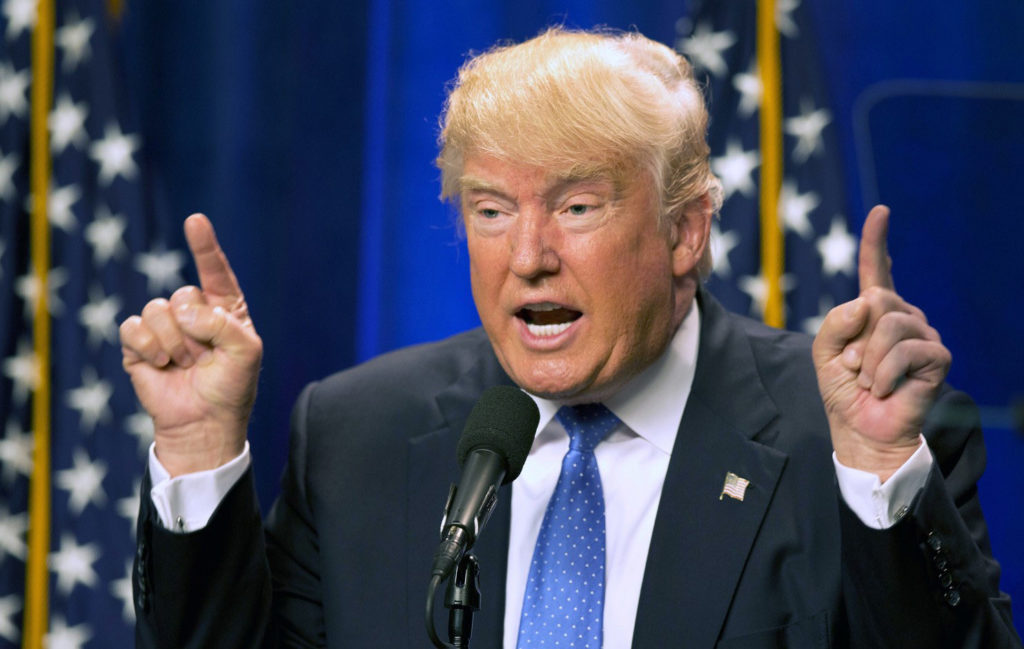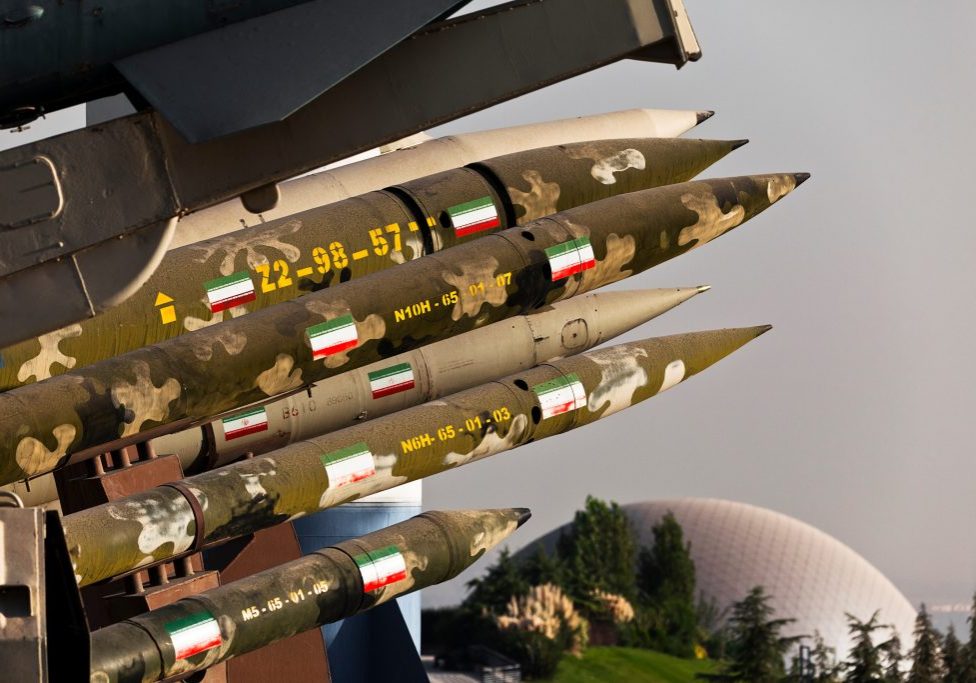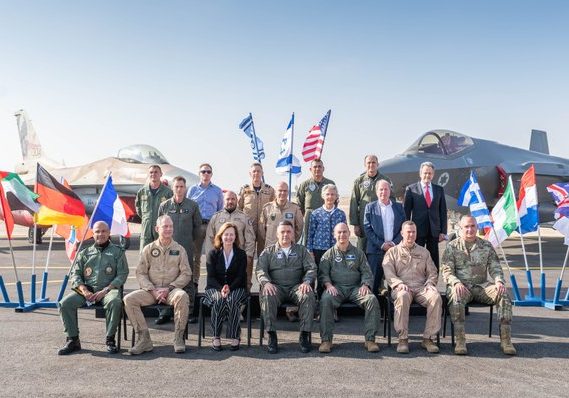Australia/Israel Review
A New Counter-Terrorism Strategy for a New President
Feb 2, 2017 | Boaz Ganor

Boaz Ganor
Despite the fact that, during his campaign, new US President Donald Trump stressed his intention to resolutely fight terrorism in general, and the Islamic State in particular, neither he nor his advisers have presented a clearly formulated strategy outlining how he intends to achieve these objectives. The only clue to be gleaned from his statements is that Trump’s counter-terrorism doctrine will be different to that of President Obama. What, then, should Trump’s new counter-terrorism policy be, and how should it differ from Obama’s?
Every counter-terrorism strategy must address two variables – motivation and operational capability. An effective counter-terrorism strategy must be built on the desire to reduce the motivations underlying the phenomenon of terrorism, as well as reduce the operational capabilities of the terrorists. Only the correct combination of these two variables and a parallel, coordinated struggle can bring the phenomenon of terrorism to its knees or at least reduce its scale. This is easier said than done.
There is an inherent contradiction between these two parallel efforts – the more effort that is made to reduce the operational capabilities of terrorist organisations (namely, targeted actions to eliminate “ticking time bombs”, arrests and prosecution of terrorists, destruction of terrorist organisations’ weapons stockpiles or the confiscation of terrorist funds), and the more effectively these actions are carried out, the more that terrorist organisations and their supporters will be naturally motivated to seek revenge and carry out attacks in order to prove to their opponents that counter-terrorism activity is futile. Therefore, one of the central challenges in the global and local battle against terrorism is the need to find the delicate balance that will allow for the simultaneous treatment of terrorists’ motivations and capabilities.
While many decision-makers around the world understand this complex challenge, only a few are working to achieve both counter-terrorism goals simultaneously.
Recent history indicates that the Obama Administration understood both variables of the terrorism equation and acted to some extent on both levels. However, during Obama’s leadership, emphasis was placed on dealing with the motivations of terrorist groups.
The outline selected for this purpose was a tireless effort to distinguish between the phenomenon of terrorism and the religion of Islam. According to the rationale behind this strategy, most of the terrorist attacks in the world are carried out by Islamist elements but they constitute a negligible minority among the approximately one-and-a-half billion Muslims around the world, and therefore the way to deal with motivations is, first and foremost, to avoid hurting the feelings of Muslims or disrespecting Islam. This goal was supposed to be achieved by claiming that terrorism has nothing to do with religion, and certainly not a specific religion – namely, Islam.
This clear policy of the Obama Administration reached extremes and was perceived by many in the world as a careless attempt to appease Muslims whoever and wherever they may be.
Even if we accept the Obama Administration’s approach, which emphasised the need to specifically deal with the motivation variable in the terrorism equation, and even if we believe that pragmatic Muslims must be recruited for the important task of dealing with motivation, the question still remains: By refraining from calling a spade a spade, was the Obama Administration’s strategy of political correctness the correct and appropriate way to achieve this important goal? Or did Obama’s policies allow political leaders and Muslim religious clerics to exempt themselves from truly mobilising for this mission by solely paying it lip service?
President Donald Trump vowed to take a hard line against terrorist organisations and their supporters, and that is a good thing. However, he must be careful not to dismiss efforts to address the motivations behind terrorism as well, and he must find other new and more useful ways to harness the silent and pragmatic Muslim majority to deal internally with the dangerous elements growing within Islam. In this context, President Trump must publicly declare that he does not believe there is a problem with Islam. Religion, every religion, can be interpreted in a way that promotes the values of peace, solidarity and tolerance, but every religion can also constitute fertile ground for fundamentalist manipulation that motivates fanatics and fools to declare all-out war against whomever they define as “infidels”.
It is important to emphasise that neither the US Government nor the entire enlightened world have a problem with the religion of Islam, but over the last few decades a serious problem has developed within Islam; a problem of radical jihadist terrorism carried out by a dangerous minority that casts a radical and violent interpretation of Islamic commandments. This problem demands that the overwhelming majority of Muslims in the world who do not subscribe to this violent jihadist interpretation take a stand and defend their religion from an internal threat that seeks to consume the religion from within. The pragmatic Muslim majority must rise up against jihadist terrorists and their supporters, not as a favour done ostensibly for the Western world or for other religions, but in order to save their religion from this dangerous minority.
Regarding the second variable in the counter-terrorism equation – the operational capabilities of terrorist organisations and their supporters – despite the progress made by President Obama in addressing the motivation variable, he did not hesitate to carry out operative activities against terrorists during his tenure in order to reduce their operational capabilities. In this context, it is worth noting the assassination of Osama bin Laden as well as a long series of military operations that were carried out against al-Qaeda commanders in Afghanistan.
However, a new threat more dangerous than the last evolved during Obama’s tenure – the Islamic State – which captured extensive territories both in Iraq and Syria. To combat this growing threat, President Obama formulated a policy of limited military action while at the same time emphasising a strategy of “no boots on the ground”. In other words, President Obama and his administration declared war (September 2014) against the Islamic State but essentially limited US military action to air strikes alone while it provided limited assistance to some of the rebel groups battling against the Islamic State. Even the air campaign carried out by coalition countries fighting against the Islamic State and led by the US was limited in number and in the scope of attack targets in order to prevent collateral damage. In effect, the Obama Administration did not understand the essence of the challenge that it faced and certainly did not learn from Israel’s experience in coping with similar terrorist organisations, embedded within civilian populations – a “hybrid terrorist organisation”.
Since capturing extensive territory in Iraq and Syria, and holding de facto control over the large local population, the Islamic State has become a “hybrid terrorist organisation”. Like other hybrid organisations before it (such as Hamas in the Gaza Strip or Hezbollah in Lebanon), the Islamic State was forced to perform pseudo-legitimate activities alongside its terrorist activities as a result of its governmental obligations to provide food, water, electricity and other services – such as education – to the population under its control.
Moreover, like other hybrid terrorist organisations, the Islamic State assimilated its military forces within the civilian population under its control, and used protected civilian facilities (hospitals, schools, etc.) as well as crowded civilian facilities as protection and human shields for its headquarters, weapons warehouses and bases. Since doing so, the organisation has practically neutralised the ability of the United States and its allies to effectively strike its facilities and fighters without inflicting severe collateral damage. President Obama did not internalise the Israeli experience in Gaza, which proves time and again that it is impossible to defeat a hybrid terrorist organisation using aerial bombings alone. Therefore, American policy based mostly on a battle against the organisation without ground operations was doomed to fail.
In light of America’s failure to gain significant achievements in the battle against the Islamic State in Iraq and Syria over recent years, it is no wonder that Russia seized the opportunity when it could and quickly filled the vacuum. Russia was also deterred from carrying out ground operations against the Islamic State but the Russian Air Force had no inhibitions whatsoever when it came to unleashing the massive activation of its air force and missile system against Islamic State targets (alongside other rebels fighting the Assad regime), while causing serious collateral damage and a huge number of civilian casualties in Syria. Russia’s policy, despite all of its ethical and legal problems, proved itself effective (much more than the American policy) and struck a severe blow to the Islamic State’s capabilities. It also led to the organisation’s tactical retreat from formerly occupied territories.
President Trump, who promised the American people that he would defeat the Islamic State and strike a blow to the organisation’s operational capabilities with an effective doctrine, faces four action alternatives:
The first action alternative is to continue with a limited outline similar to that of Obama by activating the US Air Force and coalition air forces in Syria to carry out targeted bombings, helping the Iraqi army and Kurdish forces battling in Iraq and hoping for the best. In this framework, President Trump is likely to continue to adhere to the “no boots on the ground” policy out of the assumption that the American people will not accept another US entanglement in the Middle East.
President Trump’s second action alternative is liable to change American policy in the Middle East by sending significant military forces to Iraq and maybe even to Syria in order to carry out effective ground operations against the strongholds of the Islamic State. This policy would significantly contribute to the defeat of the organisation but could have serious implications including, among other things, the risk of a prolonged ground war and entanglement in a way that would affect the morale of American citizens as well as the US economy. Another problem that could arise due to this policy concerns “the day after” – what will be the United States’ military obligations after eliminating the Islamic State’s military presence in Iraq and Syria?
The third action alternative is to continue to focus solely on air strikes in Syria and Iraq but adopt a similar policy to that of the Russians while ignoring the scope of collateral damage that it would cause to civilians in Syria and Iraq. Here it seems that the moral inhibitions of the American nation and the limitations of international law would also prevent the Trump Administration from adopting this action alternative.
The fourth action alternative that the Trump Administration could take against the Islamic State is a policy that gives Putin the “green light” to do as he likes in Syria, and perhaps even in Iraq, provided that Russian actions achieve significant results that will lead to the defeat of the Islamic State. This policy means ignoring the gross violations of the rules of war by the Russian Air Force as well as retracting America’s declared stance, according to which Assad must vacate his rule in Syria.
This policy may indeed lead to the desired results vis-à-vis the Islamic State with a relatively low price to pay by the new US Administration. It could even strengthen the relationship between the US and Russia. However, the Trump Administration must take into account that this policy is likely to hurt America’s standing in the Middle East and accelerate the ongoing trend of loss of loyalty on the part of America’s allies in the Middle East. (This dangerous trend began several years ago as a result of President Obama’s Middle East policy that supported the uprisings against Arab traditional regimes in the framework of the “Arab Spring”. This trend intensified in light of Russia’s willingness to fill the vacuum created by American foreign policy in the Middle East.)
In light of the above, it seems that President Trump would do well to integrate the various action alternatives and formulate a synergised strategy for dealing with the Islamic State’s operational capabilities in Syria and Iraq. In this framework, the United States must increase the efforts and effectiveness of its air strikes both in Iraq and Syria by increasing the number of daily attacks and selecting quality targets to strike while reducing the sterile defence margins around the bombing targets (but still maintaining proportionality in accordance with the principles of international law). At the same time, it must send in US Special Forces to carry out specific quality ground operations on Iraqi soil and perhaps even in Syria. Finally, it must increase coordination with the Russians by reaching an agreement regarding “the day after” in Syria without yielding to Russian and Iranian dictates concerning Assad’s position.
Above all else, President Trump must learn from the past mistakes of the US as well as other countries in their fight against terrorism when it comes to his relationship with Iran and even Russia, and internalise the fact that “the enemy of my enemy is not necessarily my friend”. In retrospect, it turns out that in many cases “the enemy of my enemy is eventually revealed as my most dangerous and serious enemy”.
Prof. Boaz Ganor is the Dean and the Ronald Lauder Chair for Counter-Terrorism at the Lauder School of Government, Diplomacy & Strategy, as well as the Founder and Executive Director of the International Institute for Counter-Terrorism (ICT), at the Interdisciplinary Centre (IDC), Herzliya, Israel. © ICT, reprinted by permission, all rights reserved.
Tags: International Security






